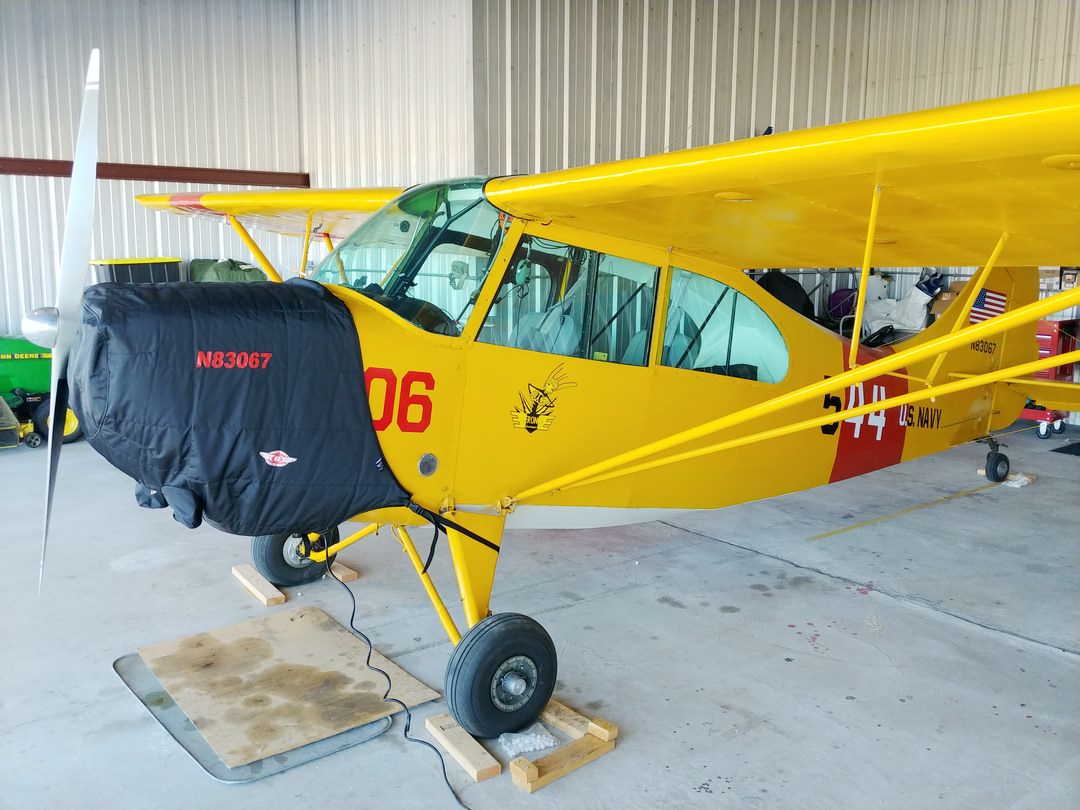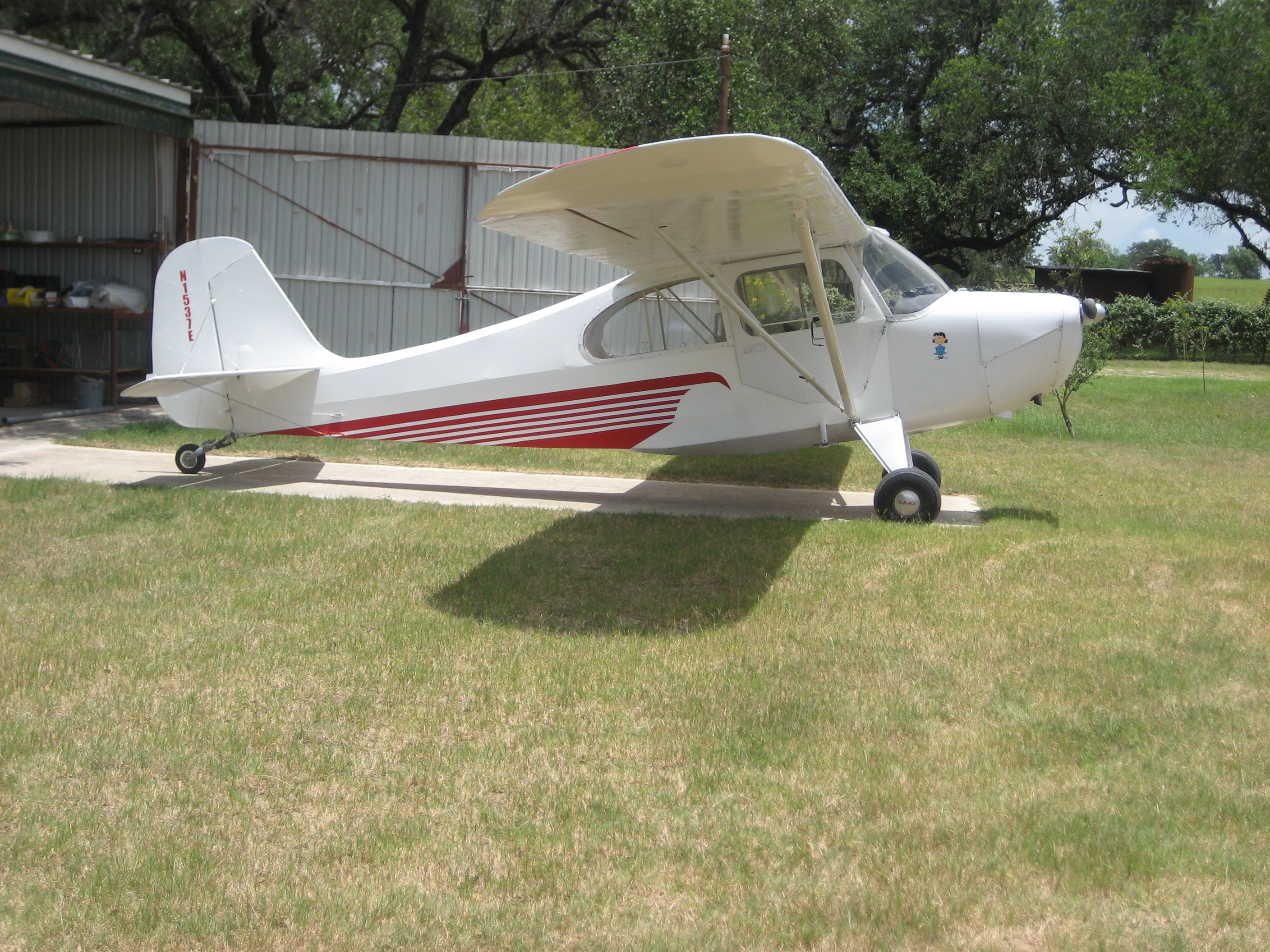Champ Aircraft - A high-wing, single-engine light airplane configured with fixed conventional landing gear and tandem seating for two passengers.
And personal use – and was developed specifically to compete with the popular Piper Cub. It began production in the United States in 1945, making it one of the world's most popular and longest-produced light aircraft models.
Champ Aircraft

In addition to high-volume production of the Champ by Aeronca Aircraft, it was revived in various forms in the 1950s and 1960s by the Champion Aircraft Company, and again in the 1960s and 1970s by Bellanca and in its variants by American Champion Aircraft. In the early 2000s.
Aeronca 7ac Champion Vintage Classic Light Aircraft Designed In The 1940s Stock Photo
Champion returned to production in 2007, to take advantage of the new Light-Sport Aircraft (LSA) range.
The Aeronca 7 Champion line—developed in the mid-1940s as a post-World War II response to the popular Piper J-3 Cub—was already featured in the Aeronca's wartime design, the Aeronca Model T, Aeronca Fender, and Aeronca L. 3), but also incorporates design elements of the traditional Aeronca, including the internal main trusswork of the fuselage frame. Like its predecessors and early rivals, the high-wing, two-seat aircraft had tandem seating, conventional landing gear (equipped with a tail wheel) and a small piston engine.
Like many light aircraft of the time, the Champ's fuselage and tail surfaces were constructed of welded metal tubing. The outer structure of the fuselage is constructed by a combination of fabric-covered wooden trusses and longitudinals. The cross-section of the metal fuselage trusses is triangular, reminiscent of the Aeronca C-2 design of the late 1920s.
The Champ's strut-braced wings, like the fuselage and tail surfaces, are covered in fabric and use aluminum ribs. Most champs are built with timber spars. American Champion uses aluminum spars in its production aircraft and also makes aluminum-spar wings available for retrofit installation on older aircraft.
Aeronca Champ 7ac, 7ec Aircraft Protection Covers, Reflectors And Plugs, Bruce's Custom Covers, Aircraft Paint Protection, Aeronca Aircraft Protection, Aeronca Plugs, Emapa
Like the Piper Cub with which it competed, the Champ featured tandem seating. However, while the J-3 model of the Cub can be flown solo from the rear seat, the Champ can be flown solo from the front, providing better forward visibility, especially on the ground and during takeoff, landing, and climb. The Champ offers better visibility than the Cub, allowing 300 degrees of visibility for the forward-seated pilot, and has a larger cabin than the Cub.
The landing gear of most Champs was of the conventional arrangement, although two variants with tricycle gear were produced and a model with reversed tricycle gear was attempted.
Conventional-gear Champs have a steerable tailwheel and most have a steel tube main gear that uses an oleo strut to absorb shock.

One variant used a sprung-steel main gear and the production model of the American Champion Champ used aluminum gear legs. Tricycle-gear Champs use steel tube and oleo strut main gears, with an oleo strut nose gear.
Beautifully Restored Classic Aeronca 7ac Champ Displaying Us Flag. Editorial Photography
The 7AC, 7CCM, 7DC and 7EC models were approved as floatplanes with the addition of floats and vertical stabilizer fins; The floatplane versions were designated S7AC, S7CCM, S7DC and S7EC respectively. 7GC and 7HC can also be operated with floats but are not privileged in this configuration. All floatplane versions have increased gross weight over corresponding landplanes.
Built by the Aeronca Aircraft Corporation, the Champ first flew in 1944 and ended production in 1945. As a financial rival to the Piper Cub (which has been greatly improved), the Champ is popular in training schools training veterans returning from the world. Billed in the thousands with government funding from War II, the G.I.
The original Model 7AC Champion initially sold in the thousands, peaking in 1946 as Aeronca developed the highest volume production line in general aviation. Between 1946 and 1947, Aeronca produced an average of 30 light aircraft per day (at one point reaching 50 per day). But 1946 marked an industry-wide explosion in lightplane production. The postwar boom of the late 1940s and early 1950s led to a sudden drop in mass sales, and—in the rest of the U.S. As with the lightplane industry—Aronka production declined to a small fraction of 1946–1947 sales.
Upgrades in 1947, 1948, and 1949 led to the 7BCM, 7DC, and electric-system-equipped 7EC models, all of which compensated for the P-factor with a larger vertical tail, greater torque, and genes compared to the earlier 7AC.
Aeronca Champ Aircraft Ad 10/12/2021c
Some of these Champ variants are available in the US. Army Air Forces (USAF) and its successor, the US Purchased by the Air Force (USAF), specifically the US Used as an alternative to the Piper L-4 for the Army Ground Forces and National Guard. A type of Piper Cub, used as an observation and liaison aircraft. The Aeronca Champ military variants were labeled L-16, L-16A and L-16B.
By the time production began in 1951, the company had sold over 8,000 Champions, mostly 7AC Champions (about 7,200).
Aeronca ceased production of light aircraft in 1951 and Champ Design was sold to Champion Aircraft in 1954, which continued to produce Champion aircraft through the 1950s and early 1960s. Champion Citabria.

Champion Aircraft was acquired by Bellanca Aircraft in 1970, which continued to produce their Champion-winning Citabria and Decathlon designs.
Piper Aeronca Champ Model
In 1971, Bellanca introduced the 7ACA version of the Champ as a more basic complement to their other designs, which were the least expensive and lowest performing commercially produced light aircraft on the market at the time.
Only a few 7ACAs were built between 1971 and 1972. Bellanca ceased all production in the early 1980s.
American Champion Aircraft Corporation acquired Champ and related designs in 1989. In 2001, they were rumored to be considering reintroducing the Champ design as the 7EC powered by Jabiru Aircraft Gain. Although a test version was flown, this combination was never put into production. Designated a light-sport aircraft (LSA) category aircraft in the United States by the FAA, in late 2007 American Champion began production of an improved version of the 100 hp (75 kW) Continental O-200-powered 7EC. A. The new product aircraft is type certified, but also qualified to be flown by sport pilots in the United States.
Although the fuselage and cowling shape remained the same as the original-production model, the new aircraft used modern Citabria windows, interiors, doors and windscreens.
Aeronca Champ 7ac
Fuel capacity was reduced to 18 US gallons (68 L; 15 imp gal) to save weight; Despite many other standards, such as aluminum landing gear legs and the use of bare birch floorboards instead of carpet, the plane's payload was insufficient to carry two adults at once and a full tank of fuel. The manufacturer is considering several other weight-saving measures, including using the lighter Continental O-200D engine previously offered in the Cessna 162 Skycatcher.
Only certain original-production 7EC airplanes certified with a gross weight of 1,300 lb (590 kg) qualify for the LSA category;
Various versions of the Champ were tested and produced from 1944, including military, aerobatic, cropduster, tricycle-geared and (as the 402 Lancer) twin-engined variants.

Derivative Citabria designs – models 7ECA, 7GCAA, 7GCBC and 7KCAB – are discussed in a separate article, as is the twin-engine 402 Lancer. Floatplane variants are denoted by an "S" prefix and are discussed together with the standard corresponding land variant.
Aeronca Champ 7ac Airplane License Metal Plate
Introduced in 1945, the 7AC Champion ("Champ") was the first (and, by far, most popular) version of the design. It used a 65 horsepower (48 kW) Continental A-65-8 engine.
The Champ has a conventional landing gear configuration, with shock absorption in the main gear provided by oleo struts. There is no electrical system in the aircraft. It is distinguished from almost all other types by the bulge of the dorsal fin at the leading edge of the vertical tail (most specimens have a larger posterior tail). About 7,200 were built between 1945 and 1948—more than all other types combined, and far more than most competing designs of the period. Some US The military took over and designated the L-16 - not to be confused with the L-16A and L-16B, which were later derived from the Champ variants.
Gross weight is 1,220 lb (550 kg) for the standard 7AC and 1,320 lb (600 kg) for the S7AC floatplane configured; Fuel capacity for either version is 13 US gallons (49 L; 11 imp gal) in one tank.
Reintroduced by the 1971 Bellanca, it was a modernized version of the design that evolved from the Citabria line. The 7ACA is powered by a two-cylinder Franklin 2A engine of 60 horsepower (45 kW); Gross weight is 1,220 lb (550 kg).
Aeronca 7ac Champ, N82892, S/n 1542,
A total of 7BCM produced for the Army as Model L-16A. Gross weight and fuel efficiency remain unchanged from the 7AC.
Prototype, 1 produced, serial number 7-BX-1, FAA aircraft registration number N4084E but registration canceled on 4 October 1951, other details unknown.
An improved version of the L-16, the L-16B/7CCM featured a 90 hp (67 kW) Continental C90-8 engine, a larger vertical tail, hydraulic brakes, and a gross weight increase of 1,300 lb (590 kg). ); Additional gross weight is allowed to increase to 1,350 lbs (610 kg) when "long stroke oleo landing gear" is installed and "underground spinning prohibited".
Champ sweatshirt, aeronca champ aircraft, shirt champ, rubberstamp champ, canvas champ, champ stamp, champ sneakers, champ sports, champ aircraft for sale, hero champ, champ tires, aeronca champ aircraft for sale


0 Comments